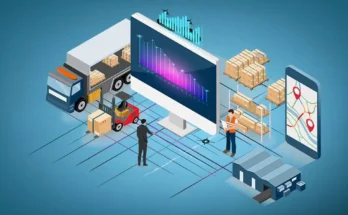If you’ve ever watched a sci-fi movie from the 80s or 90s, you’ll probably pick up on a lot of technologies we use every day in the modern world. But back then, the ideas seemed crazy and, well, fully entrenched in the world of science fiction. Technology moves fast, and the ‘futuristic’ technologies we’ve seen in movies often come to life decades later.
2023 is an exciting time for technology, especially with the rise of AI being on everybody’s lips. But there are plenty of other technologies out there too. Some are already commonplace, but we expect further advancements in them, which is why you might see some technologies in this article that may not seem super-futuristic.
Artificial intelligence
No list of futuristic technologies would be complete without discussing artificial intelligence (AI). The recent rise in popularity of programs like ChatGPT has put AI firmly in the public consciousness. This is both good and bad because many fear that AI will threaten jobs and livelihoods, amongst other wilder fears about the capability of machines.
The reality is, AI is here to stay, and it already forms the basis of so much technology we use today. Even in its most basic form, AI and machine learning are responsible for things we take for granted, such as product recommendations on websites or ‘viewers also enjoyed’ recommendations on our streaming services.
ChatGPT is in its infancy and is still very unreliable, however, this is set to improve with an upcoming new release, and the sky is really the limit in terms of where AI might go next.
Driverless cars
Will 2023 be the year we see driverless cars on the road? Probably not, however, the technology may not be as far away as you think. There are constant advancements in this space, but naturally a lot of safety concerns. Many systems have been tested and tried, with none necessarily meeting safety standards for all driving conditions.
The Society of Automotive Engineers recognises there are 6 levels of automation when it comes to driverless cars. We’re comfortable at level 2, with many cars being able to brake, steer and accelerate autonomously. However, completely controlling a vehicle in all traffic conditions autonomously is still a way off.
Voice-activated home assistants
Systems like Google Home and Amazon Alexa have been around for a while now. Using Internet of Things (IoT) technology, these systems allow you to control many household appliances with your voice. This could include the TV, lights, door locks and much more. You can even ask it for help with research, such as asking it to compare NBN plans to get the best deal. In addition, you can control many parts of your home remotely through an app on your smartphone. For example, turning heaters on and closing automatic blinds an hour before you get home from work.
What will be interesting in 2023 is whether these systems advance even further. In future, we expect AI to be a huge part of the home-assistant trend, so will we see your smart home system learning your preferences and taking action automatically? With Google and Amazon leading the way, the evolution of voice-activated home assistants is an interesting space to watch.
Drones and delivery
Most people have pondered what it would be like to see drones filling the sky, delivering Amazon parcels to doorsteps around the globe. Well, you can ponder no more, because this type of activity is becoming more commonplace. McKinsey reports that over 2000 commercial drone deliveries were taking place every day in 2022, which shows this technology is rapidly becoming more popular.
There are naturally a lot of safety concerns and logistics to be ironed out for this technology to become the norm, but with over 2000 deliveries already happening, the future looks pretty clear when it comes to drone deliveries.
Virtual reality (VR) and augmented reality (AR)
Most people have probably engaged with some sort of VR or AR technology, whether it’s for gaming, shopping or something else. Virtual reality (VR) is a computer technology that uses software to generate realistic images, sounds and other sensations that replicate a real environment. Augmented reality (AR) is a technology that overlays digital information on top of the real world.
We’re already seeing AR used more frequently in the world of commerce. For example, customers can use AR to see how a piece of furniture would fit in their own lounge room. But there is a newer concept known as Extended Reality, which mixes VR and AR. This type of technology will likely be first used in the world of gaming, but it will certainly have other uses as the technology evolves.
Blockchain technology
Many people have heard the term ‘blockchain’, but not many understand what it means. Blockchain is a distributed ledger that enables a secure and transparent exchange of data. It’s already used in healthcare, finance, real estate and insurance to name a few. The beauty of blockchain is that it can be used to track and verify transactions. It provides an indisputable record of those transactions, stored on multiple computers around the world (instead of one central server) so it can’t be altered or corrupted by hackers.
The technology is the basis of the widespread cryptocurrency trend, but experts still believe the technology has more far-reaching possibilities in any industry where checks and verifications are important. As such, the cyber-security industry is particularly interested in blockchain technology.
Renewable energy technology
One of the biggest areas of technological advancement is certain to be the renewable energy industry. As the world battles climate change, it’s perhaps ironic that technology could be the thing to save us. Many would argue that the industrial and digital revolutions are responsible for damage to our planet, but the reality is, technology forms the basis of our renewable energy future.
From community solar programs to more advanced solar panels, to electric cars and charging stations and so much more, the renewable energy industry will rely heavily on technology in 2023 to improve products and collect valuable data.
Robotic Process Automation (RPA)
RPA was first created in the 1990s but didn’t really take off until recently due to slow adoption rates and high costs associated with implementing it. However, now that RPA has become more affordable and easier to implement, companies have begun adopting this technology at an increasing rate. It’s likely this will continue into 2023.
Robotic Process Automation (RPA) is a type of software that automates business processes by mimicking human tasks. It can be used to automate repetitive tasks, improve efficiency and reduce costs. Again, it is in its infancy now, and it is one particular technological advancement that has people fearing for their jobs. RPA can be used in warehouses, production factories, and even office administration tasks.
With that being said, it’s an exciting time for the human race when machine processes can take mundane tasks away from humans. The potential for humans to be more focused on creative tasks that we’re good at can only be a good thing.
Also Read: AI In Today’s Business (2023)
5G
5G is the fifth-generation mobile network standard, which means it’s the fastest wireless connection you can get. In some parts of the world, 5G connectivity is faster than the WiFi connections in people’s homes. While the technology is available today, it is still in its infancy.
Some older phones can’t operate on a 5G network, and perhaps more importantly, 5G networks aren’t even available everywhere yet. As this technology evolves, we can expect even better connectivity with our phones being able to do so much more.
There’s no doubt that we’re on the brink of a new era in technology, and it’s exciting to think about how all these different innovations will shape our lives. Rather than fear new technology, we need to embrace the good aspects and ensure regulators stay on top of the potentially scarier aspect. Whatever your view on tech, 2023 is an exciting time of change.




